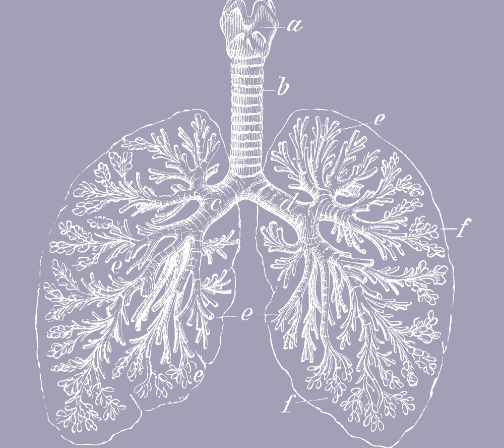


Subscribe
Data delivered to your inbox. Keep up with the latest developments.Conspiracies amplified as politicians question South Africa’s president.

The African Transformation Movement (ATM), a fringe political party based in South Africa, amplified several coronavirus-related conspiracy theories when the party’s leaders formally presented questions to President Cyril Ramaphosa on April 5, 2020.
The questions, published on the ATM’s official letterhead and widely shared on social media by party leaders, afforded these conspiracies legitimacy and reach in excess of the original rumors. In addition, the reach (and arguably the validity) of these conspiracies was expanded even further after several media houses reported uncritically on the one-sided interaction.
When politicians or online publications engage with such rumors uncritically, they are propagated beyond the confines of the much-smaller social media ecosystem in which they originated. Earlier this month, a conspiracy claiming Bill Gates intended to test a coronavirus vaccine in Africa was amplified by News24, South Africa’s largest online publication. News24 was later forced to retract the piece and apologize to Bill and Melinda Gates for the publication.
The African Transformation Movement
The ATM, a conservative Christian party founded in 2018, won two seats in South Africa’s 400-member parliament after securing 0.44 percent of the national vote during the 2019 elections. Its political presence also includes two provincial legislature seats in the Eastern Cape and KwaZulu Natal. Despite the party’s small political footprint, the ATM’s head of policy and strategy is former government spin doctor and media business owner Mzwanele Manyi.
On April 5, 2020, the party published a letter addressed to President Ramaphosa urging him to convene a special meeting with party leaders to discuss several conspiracy theories. These included claims that a friendly tennis match organized between Bill Gates, comedian Trevor Noah, and tennis pros Rafael Nadal and Roger Federer served as a “smokescreen event” to discuss the testing of COVID-19 vaccines in South Africa.

The conspiracy was far-fetched: the exhibition match between Federer and Nadal took place on February 7, 2020, and was the sixth in a series of exhibition matches intended to raise funds for rural education programs in South Africa. Bill Gates and Trevor Noah were announced as guest participants on July 4, 2019, many months before the first case of coronavirus occurred.
Despite this, the conspiracy claimed the event was orchestrated so President Ramaphosa and Bill Gates could discuss piloting a (non-existent) COVID-19 vaccine in South Africa. The letter also rehashed false claims that Gates provided facemasks to villages and townships infected with the new coronavirus in “a mission to depopulate the [African] continent.”
In an ironic twist, the ATM called on President Ramaphosa to dispel these conspiracies with “credible counter information,” despite not providing any evidence to support these claims in the first place.
Appropriated tennis match
Prior to the ATM’s posts, discussion about the tennis match conspiracy was limited. Mentions in newspapers and blogs were confined to sports news in non-South African media that were referring to the exhibition match as a background to their reporting.
On Twitter, the situation was slightly different. The DFRLab’s investigation identified 134 mentions relating to this conspiracy between April 1, 2020 and April 12, 2020. These mentions coincided with an interview between Trevor Noah and Bill Gates, published on April 4.

The bulk of the mentions during this period occurred on April 5, and made the initial connection between the exhibition tennis match and Noah’s interview with Gates. Several Twitter users “connected the dots” between Noah, Gates, and the earlier exhibition match in February this year.

Overall, the organic discussion around this topic was limited and tapered off after April 5.
Amplifying the Messages
The ATM published its letter directed to President Ramaphosa on its Twitter and Facebook channels on April 5 at 7:03 PM and 07:05 PM local time respectively. The letter was created using the ATM’s official stationery and featured a prominent logo of the South African Parliament.
The letter bore the hallmarks of a publicity stunt: although a formal process for submitting questions to the presidency exists in Parliament, the ATM opted to forego this process and instead published the letter on social media. Mzwanele Manyi and party leader Vuyo Zungula retweeted and amplified the letter over the course of the next day.

Although direct mentions of the tennis match conspiracy were on the decline at this stage, the publication of the letter and subsequent amplification resulted in a large number of mentions referring to it. These mentions peaked at 952 mentions on April 6 and dropped off quickly afterwards.

Approaching the media
In addition to ATM party leaders, several South African media platforms published pieces related to the ATM’s letter to Ramaphosa.
The SABC, South Africa’s state broadcaster, was the first to run a story on the ATM’s request. The article was uncritical of the content of the ATM letter, and embedded a link to the ATM’s tweet in the article. Further pieces published by The Citizen and Briefly.co.za also fell short of critically assessing the claims made by the ATM, and repeated the claims, or embedded links to the ATM’s letter. Only TheSouthAfrican.com made an effort to review the conspiracy claims next to their coverage of the letter.
Social media engagements for these articles — likes, shares, retweets, and similar ways of interacting with a post — indicate that they received significantly higher interaction across social platforms. These figures, however, underestimate the article’s reach, as they do not take into account readers that arrive at the article directly or via private messaging platforms such as WhatsApp.

What is clear is that the publication of these pieces resulted in a significantly wider audience being reached: an audience which was not necessarily part of the Twitter ecosystem in which the tennis-match conspiracy was hatched.
The amplification and related legitimization of untested conspiracies by political parties and news platforms run the risk of exposing a much larger audience to these falsehoods than what the original conspiracy could have reached.
In this case, by publishing the letter, and insisting on counter information to be provided, the ATM granted the conspiracy legitimacy it would have otherwise lacked. And by reporting uncritically on the publication, news platforms inadvertently exposed a much wider audience to the falsehoods it contained.
Jean Le Roux is a Research Associate, Southern Africa, with the Digital Forensic Research Lab and is based in South Africa.
Follow along for more in-depth analysis from our #DigitalSherlocks.
The Digital Forensic Research Lab team in southern Africa works in partnership with Code for Africa.








